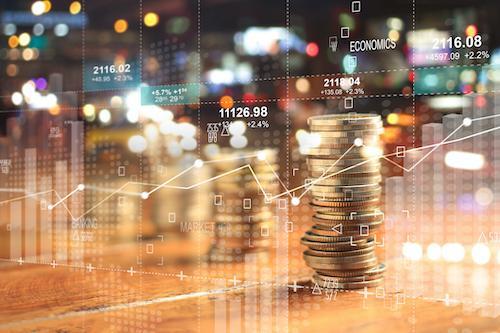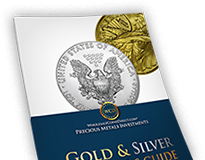
What’s Next for Metals After Major Run-up?
Crash, Collapse, Correction or Consolidation? Perhaps we should add Crisis? to our list of Cs. Where are we with gold and silver moving forwards? We had been in the throes of a seemingly inexorable rise in precious metals prices, but as usual all good things come to an end, or at least take a pause for breath. The big question now facing the precious metals investor looks to be ‘Is this the end of the bull market in precious metals, or is it just another blip on the way to yet higher levels?’ The jury is still out on this, but our considered opinion is that what we have seen in the past week is, in reality, a combination of all these things with consolidation now being the most relative to the current market.
The initial gold price crash was probably overdone, taking it down to below $1,900 – around 8% from its recent peak - from where it quickly made a partial recovery. Since then it has been consolidating in the $1,930 to $1,960 range, ending the week at about the midway point between the two. We suspect that from there it will take another run at $2,000 before long. Given the ease at which it broke through this assumed psychological level only a couple of weeks ago we doubt if this will prove to be much of a barrier this time around either.
Silver was brought down sharply as well – in perhaps even more of a shock for the silver investor given how rapidly the metal had risen of late vis-a-vis gold - with the Gold:Silver Ratio (GSR) falling from over 120 in mid-March down to below 70 at one time last week when the metal price was still rising. Media coverage of the silver price rise had been almost universally supportive, thus somewhat embellishing the shock value of the price fall. From peak to trough the metal price fell over 17% in just two days, before recovering a little under half of its fall, ending the week just above $26 an ounce. To put this in perspective, though, this level is still over double the price of its mid-March low point.
Platinum and palladium were not spared from similar price movement patterns to gold and silver, although perhaps the peaks to troughs took place over a slightly more prolonged period and their performance over the past few days has been even more volatile. These are very much industrial metals nowadays and thus perhaps prices are, or should be, more subject to the overall state of the global economy. Given the latter may well deteriorate further before it begins to get better we’d remain nervous about the prospects for the platinum group metals in the medium to long term.
There have even been a few occasions in the past few days of trading when the gold price has exceeded that of palladium and we suspect it will not be too long before this situation becomes permanent again. Historically the palladium price has tended to be lower than either gold or platinum, and while it may yet take some time for it fall back below the platinum price we suspect that this may also happen a few years down the road – particularly once electric powered light vehicle sales start exceeding those of internal combustion engine powered units – palladium’s biggest demand sector.
But, in the short to medium term we see all the precious metals as being first in consolidation mode, and then powering up to more positive levels – with gold and silver to the fore. We see both taking out previous recent highs, with silver the more volatile of the two and likely to make the greater percentage gains.
As a guide to precious metals sentiment it is probably well worth keeping an eye on flows into, or out of, the world’s precious metals ETFs. Both gold and silver ETFs have seen enormous inflows this calendar year, but recently we have seen some outflows – although quite small in percentage terms – from the major gold ETFs. However, in contrast there have still been some massive inflows into the silver ETF arena. This does suggest that, for the moment at least, there is still momentum behind silver investment, while that for gold may be easing a little, but the news from Berkshire Hathaway (see below) may give the latter a fillip too. It is certainly worth following these ETF movements day by day to try and get an early pointer to the likely metal price progress.
Perhaps one of the most bullish news items for gold we have seen over the past weekend is that Warren Buffett’s Berkshire Hathaway bought 20.9 million shares in Barrick Gold (GOLD) during the past quarter. Buffett had previously eschewed precious metals bullion and precious metals stocks as investment options, and has been particularly disparaging about gold, so this is something of a volte-face. Berkshire Hathaway is arguably the U.S.’s most successful investment conglomerate so its dealings attract enormous interest.
In this case the Barrick share purchase in part replaces Berkshire Hathaway’s divestment of some of its U.S. banking stocks (including all of its holding in Goldman Sachs) and the remainder of some of its airline investments - all of which have suffered from the coronavirus impact. Many would consider the Barrick move a positive one, though, and a bet on the gold price too, by investing in a company which seems to be in line to record huge earnings rises, even at current gold prices, which give it huge profit margins, Barrick, the world’s second largest gold miner by volume of metal produced, mines gold at $1,000 an ounce or less – and management has been implementing a rapidly rising dividend. To us it’s a bit of a no-brainer equity investment choice in the current economic environment.
Overall there would appear to be a plethora of bullish factors which should see the gold price rise again – and probably see silver rise even faster as it tends to outperform gold in a rising gold price scenario. The longevity of the virus-induced global recession/depression comes first and foremost. Along with a weakening dollar – in part due to the huge virus-induced debt buildup. Most analysts see this trend continuing until at least well into 2021, perhaps longer with some hard-hit companies taking years to recover, if they ever do. Added to that is the U.S. Presidential election in November which takes place under perhaps the most polarized political divide in U.S. history and is bound to add a degree of uncertainty into the markets – and gold tends to thrive on uncertainty.
Then there has been, in our view, the irrational performance of the equity markets, particularly inn the U.S., which have been rising amidst the worst economic and employment figures possibly ever recorded. The government and central bank largesse which has been buoying up global economies is not endless, and once this starts falling away we suspect equities markets will crash and perceived safe havens like gold should benefit hugely.
The U.S. domestic and international geopolitical situation is fraught with dangers too. Some major cities are beset by seemingly out-of-control riots with moves to defund, or even abolish, local policing systems – hardly a recipe for stability and safety for the average citizen.
On the international front, President Trump seems to be set on picking fights with all and sundry over what he reckons to be unfair trade practices. These somewhat protectionist moves may well be justified in some cases but the disputes with China, in particular, seem to be verging on the extreme and could lead to more serious physical consequences, notably in the South China Sea and the Taiwan Strait, as trade tensions rise and perhaps morph into military confrontation. China may well be keen to test its military advances against U.S. weaponry in a limited theatre of its own choosing near to home. There are many other international flashpoints on the horizon too and if any of these escalate or blow up then these could well give yet a further boost to gold and silver prices.
The world seems to be becoming an ever-increasingly unsafe place and, as noted above, gold tends to thrive on this kind of uncertainty. As a protection against declining currency values, in the U.S. and globally, gold may have a good way to go yet. But one should recognize that any seeming gold price rise is perhaps more of a stabilizing factor in the face of ever-continuing domestic currency debasement. As for silver, momentum is strong for the moment as the GSR moves closer to its 10 year average of around 66. When the silver investor gets behind the metal one can expect sharp rises, particularly if the gold price remains reasonably strong. But a further word of warning – twice in the past 40 years or so, the silver price has been driven up to the seeming ‘thou shalt not pass’ level of $50 an ounce, and each time it has fallen at this hurdle and been brought back down sharply by the powers that be. The current momentum as represented by bullion price rises, the fall in the GSR and the continuing enormous flows into silver ETFs could well see it approach $50 again. Will it be third time lucky for a breakthrough, or will history again repeat itself if this level is reached yet again?
Thus gold looks to be the tortoise to silver’s hare. It promises a slow and steady increase in price in comparison with silver’ likely much higher degree of volatility, but if silver does at last break through the $50 ceiling, then all bets are off! The choice is thus comparative safety, and a more steady advance, in the gold price, or much more of a gamble in silver which, if things go positively could reap rich rewards.






